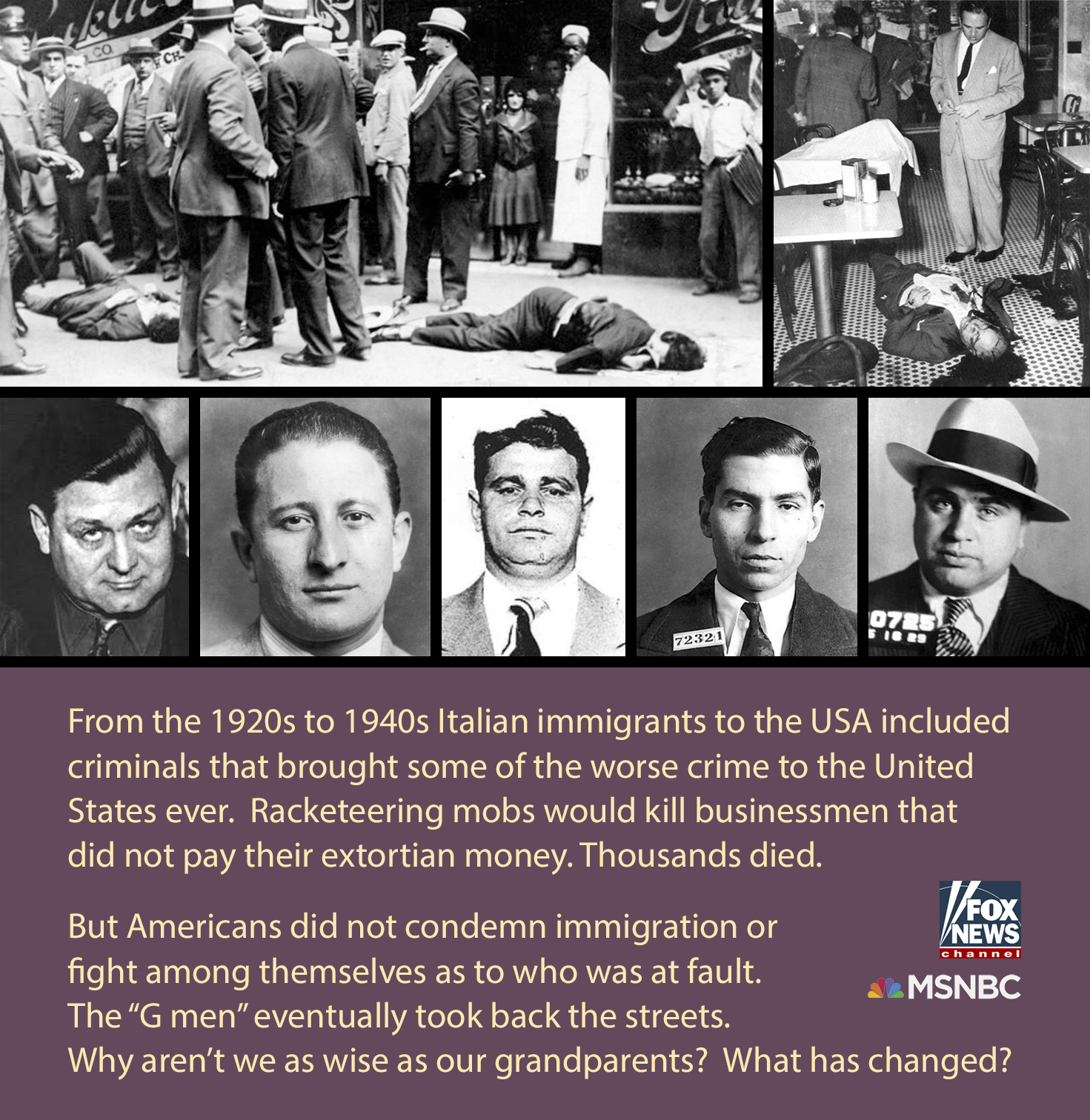From the 1920s to the 1940s, the rise of Italian-American organized crime in the United States became a defining chapter in the nation’s history. Infamous figures like Al Capone, Lucky Luciano, and others built criminal empires through racketeering, extortion, and violence. Thousands of people lost their lives as mafia families waged wars over territory and power.
Yet, despite the criminal activities of some, Americans did not turn against all Italian immigrants. The country recognized that while a fraction of any immigrant group might engage in crime, the vast majority sought opportunity, freedom, and a better life.
Then vs. Now: Have We Forgotten This Lesson?
The government responded with law enforcement, not blanket condemnation. The FBI, known then as the “G-Men,” relentlessly pursued organized crime, breaking the power of the Mafia over time. America did not shut its doors to Italians, nor did it fuel widespread anti-immigrant hysteria. Instead, law and order prevailed without sacrificing the country’s values.
Fast forward to today, and immigration remains a divisive topic. We see history repeating itself in how certain groups are stereotyped and blamed for crime. The question is: Why aren’t we as wise as our grandparents?
Crime must always be addressed, but have we lost sight of the balance between security and fairness? Do we let fear drive policy, or do we uphold the American ideal that people should be judged as individuals, not by their nationality?
History teaches valuable lessons—if we are willing to listen.
What are your thoughts? How should we approach immigration and crime today? Let’s discuss.

Leave a Reply